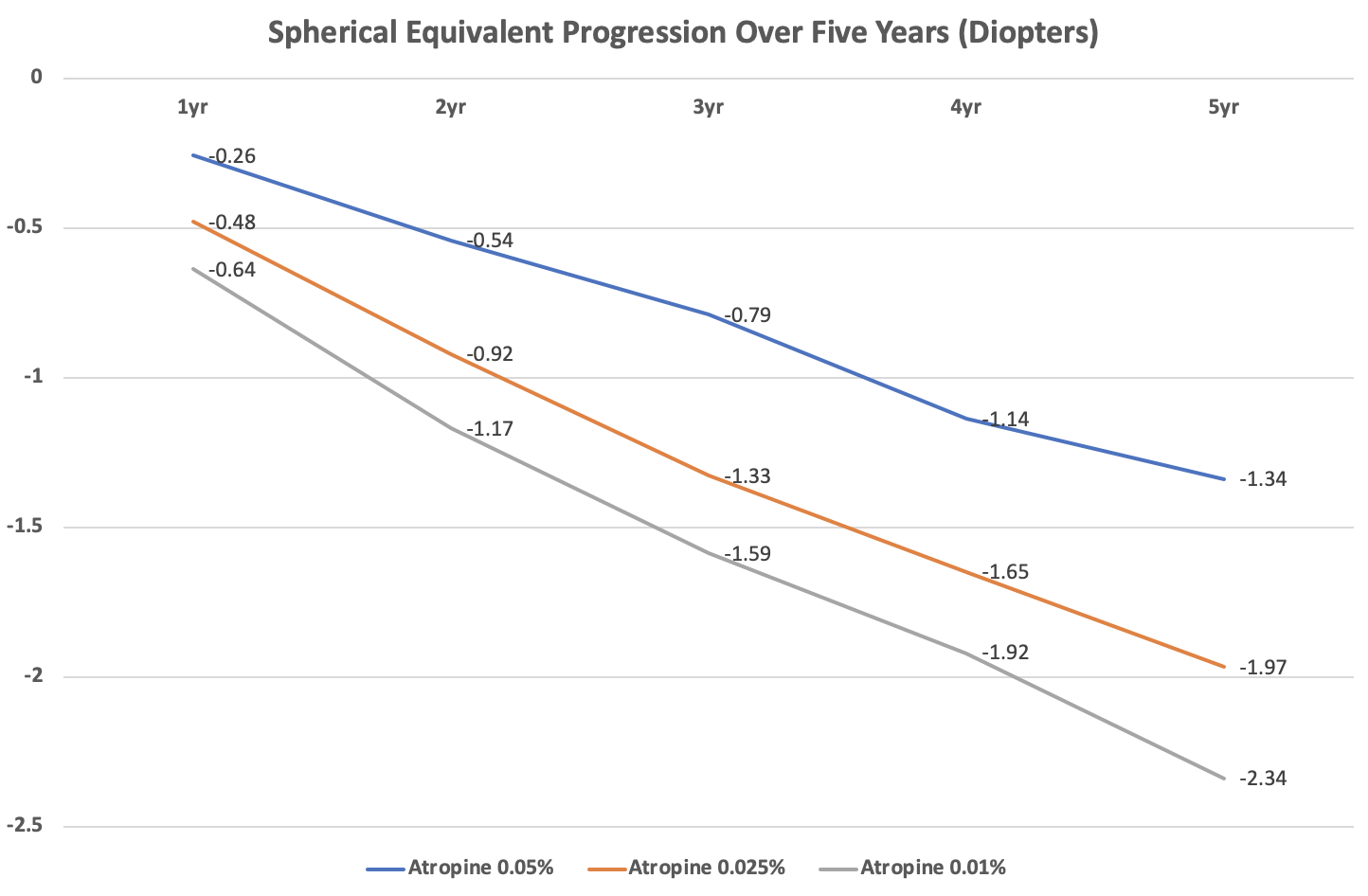Using low-concentration atropine eye drops to help slow the progression of childhood myopia is a trending topic in research, as questions remain regarding optimal dosing and outcomes. One previous high-ranking study on this emerging therapy, called the Low Concentration Atropine for Myopia Progression (LAMP) Study, found that 0.05% atropine was the most effective concentration over three years when comparing 0.05%, 0.025% and 0.01% atropine. Additionally, it found that patients who received three years of atropine treatment fared better than those who only received two years.
To further evaluate the long-term efficacy of 0.05% atropine treatment out to five years, researchers recently returned to the LAMP Study dataset to perform a follow-up study on 269 children aged four to 12 who participated in the original investigation. At five years, the data showed that continued 0.05% atropine treatment demonstrated good efficacy for myopia control.
Many of the study participants didn’t receive treatment in year three but resumed it in year four; this is because during the third year of the LAMP Study, children in the 0.05%, 0.025% and 0.01% atropine groups were randomized to continued treatment and treatment cessation. In follow-up years four and five, all participants were switched to 0.05%, “while all treatment cessation subgroups followed a PRN retreatment protocol to resume 0.05% atropine for children with myopic progressions of 0.5D or more over one year,” the researchers explained in their paper on the study, published last Friday in Ophthalmology.
The results showed that over the five years, the cumulative mean spherical equivalent (SE) progressions were -1.34±1.40D for the initial 0.05% atropine group, -1.97±1.03D for the initial 0.025% atropine group and -2.34±1.71D for the initial 0.01% atropine group. Axial length elongation over the five years displayed a similar trend among groups.
 |
|
The original LAMP Study found that atropine 0.05% was more effective at slowing myopia progression than 0.025% or 0.01% formulations. Now, a follow-up study on some of the same participants shows that atropine 0.05% is effective at five years, with similar outcomes among children who had initially used other concentrations. Click image to enlarge. |
Among the PRN treatment group, 87.9% of children needed retreatment. Between years three and five, the SE progression for this group was -1.00±0.74D, and axial length elongation was 0.49±0.32mm. For the continued treatment group during those three years, SE progression was -0.97D±0.82D, and axial length elongation was 0.49±0.32mm.
Most children needed to restart treatment after atropine cessation at year three, and notably, the researchers found that for those who did, 0.05% atropine achieved similar efficacy as continued treatment.
To summarize all these findings, the researchers highlighted several conclusions in their paper:
- Continued 0.05% atropine treatment was effective in myopia control with good tolerance over five years.
- Retreatment should be considered for those who have experienced myopia progression after stopping treatment.
- For children at high risk of myopia progression, continued treatment with 0.05% atropine during the first five years is suggested.
Zhang XJ, Zhang Y, Yip BHK, et al. Five-year clinical trial of low-concentration atropine for myopia progression (LAMP) study: phase 4 report. Ophthalmology. March 15, 2024. [Epub ahead of print]. |


